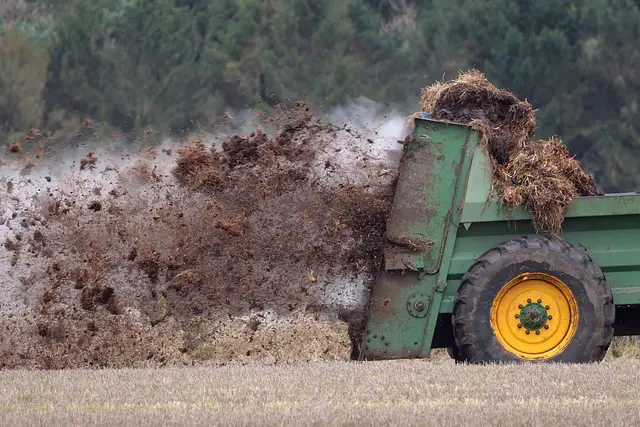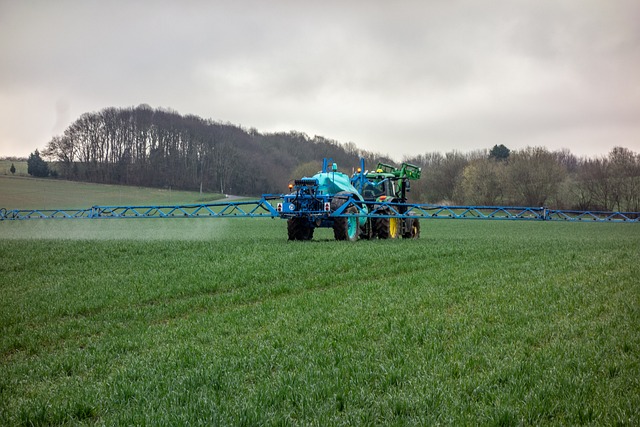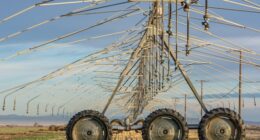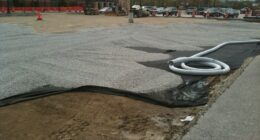Manure is organic material from animal waste, while fertilizer is a substance containing essential nutrients to enhance plant growth, often synthetic or mined.
TL;DR Manure Vs. Fertilizer
Manure tends to release nutrients slowly over time as it decomposes naturally in the soil. Fertilizers can deliver nutrients more quickly due to their concentrated formulation.
Types of manure include cow dung, poultry litter, and horse manure among others. Each type has its own nutrient profile and may be best suited for specific plants or crops. Fertilizer types are numerous as well – ranging from nitrogen-based options like ammonium nitrate to phosphorus-rich formulas such as superphosphate.
What is Manure?

Manure is organic material derived from the waste of animals, particularly livestock, used as a natural fertilizer in agriculture. It consists of animal excrement along with bedding materials like straw or hay.
Manure is rich in nutrients such as nitrogen, phosphorus, and potassium, essential for plant growth. Its application enhances soil fertility, improves soil structure, and promotes the growth of beneficial microorganisms. Farmers commonly use manure to replenish nutrient levels in the soil, contributing to sustainable and organic farming practices.
Different types of manure, including cow, horse, chicken, and pig manure, vary in nutrient content, and their effectiveness depends on factors like composting, handling, and application methods. Proper manure management is crucial to maximize its benefits while minimizing environmental impacts.
What is Fertilizer?

Fertilizer is a substance applied to soil or plants to provide essential nutrients necessary for optimal plant growth and development. These nutrients include nitrogen, phosphorus, and potassium, known as NPK, along with secondary and micronutrients.
Fertilizers can be organic, sourced from natural materials like animal by-products or compost, or inorganic, produced through industrial processes. Inorganic fertilizers often contain concentrated forms of specific nutrients, allowing for precise application. Fertilizers aim to supplement soil fertility, enhance crop yields, and address nutrient deficiencies.
They play a vital role in modern agriculture by supporting intensive crop production. However, improper or excessive fertilizer use can lead to environmental issues, emphasizing the importance of responsible application and sustainable agricultural practices.
Manure Vs. Fertilizer – Key differences
| Characteristic | Manure | Fertilizer |
|---|---|---|
| Source | Organic material from animal waste | Can be organic or inorganic, often synthetically produced or mined |
| Composition | Contains organic matter, nutrients, and bedding materials | Concentrated nutrients, often specified (e.g., NPK - Nitrogen, Phosphorus, Potassium) |
| Nutrient Types | Variable nutrient content (N, P, K) along with organic matter | Precise nutrient formulations, specific to plant needs |
| Release Rate | Nutrients released gradually as organic matter decomposes | Can provide immediate or slow-release of nutrients, depending on type |
| Soil Improvement | Enhances soil structure, water retention, and microbial activity | Primarily focuses on nutrient supply; may not contribute as much to soil structure |
| Environmental Impact | Generally considered environmentally friendly; minimizes chemical runoff | Potential for chemical runoff and environmental impact, depending on formulation and application |
| Cost | Often more cost-effective, may be available on-farm | Can be more expensive, especially for specialized formulations |
| Sustainability | Supports organic and sustainable farming practices | May raise concerns about environmental sustainability, depending on production methods |
Types of Manure and Fertilizer
Types of Manure
- Cow Manure: Rich in nitrogen and organic matter, commonly used for general soil improvement.
- Horse Manure: Similar to cow manure but may contain more weed seeds; benefits soil structure.
- Chicken Manure: High in nitrogen, phosphorus, and potassium; needs composting to avoid burning plants.
- Pig Manure: Rich in nutrients but can be high in ammonia; benefits from composting.
- Sheep and Goat Manure: Balanced nutrients; enhances soil fertility and structure.
- Rabbit Manure: Rich in nitrogen; considered a “cool” manure, safe for direct application.
- Bat Guano: High in phosphorus and nitrogen; used as a potent organic fertilizer.
Types of Fertilizer
- Nitrogen Fertilizers: Provide nitrogen for leafy green growth; examples include urea, ammonium nitrate.
- Phosphorus Fertilizers: Promote root development and flowering; examples include superphosphate.
- Potassium Fertilizers: Enhance overall plant health and disease resistance; examples include potassium chloride.
- Compound Fertilizers: Contain a mix of NPK nutrients; examples include 10-20-10.
- Organic Fertilizers: Derived from natural sources, like bone meal, compost, or fish emulsion.
- Synthetic or Inorganic Fertilizers: Chemically manufactured; examples include ammonium sulfate, diammonium phosphate.
- Slow-Release Fertilizers: Gradually release nutrients over time, reducing the risk of over-fertilization.
- Liquid Fertilizers: Applied in liquid form, providing a quick nutrient boost; examples include liquid seaweed fertilizer.
Image Credits
Featured Image By – Franck Barske from Pixabay
Image 1 By – Pete from Pixabay
Image 2 By – Luciano from Pixabay








